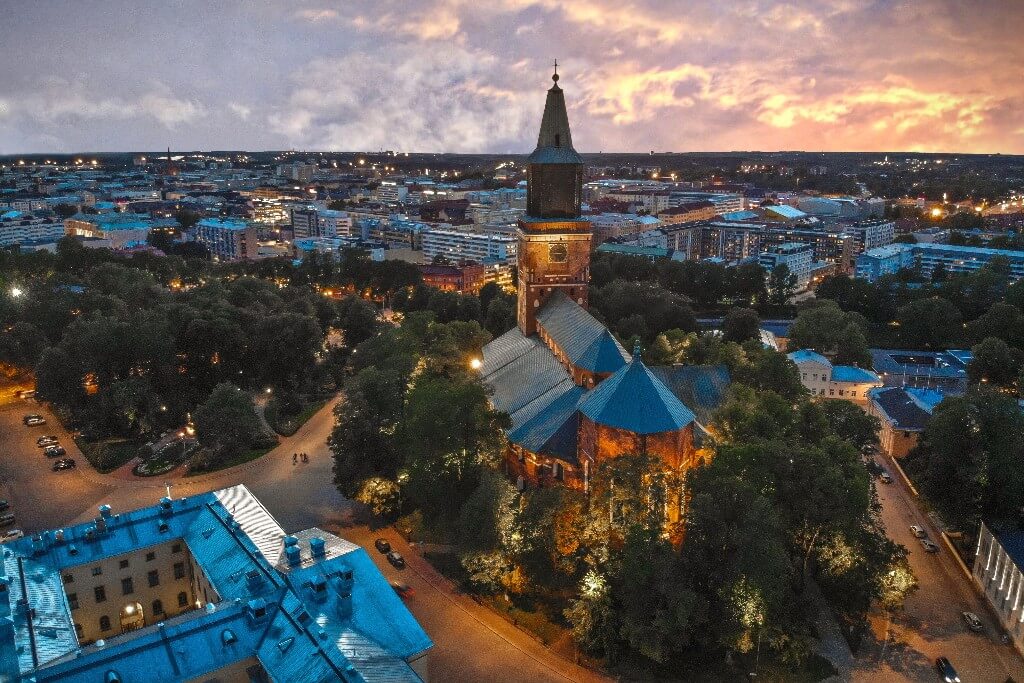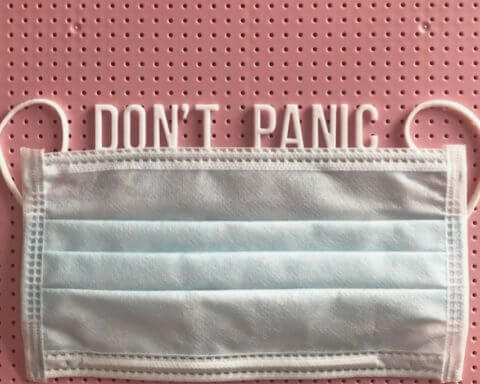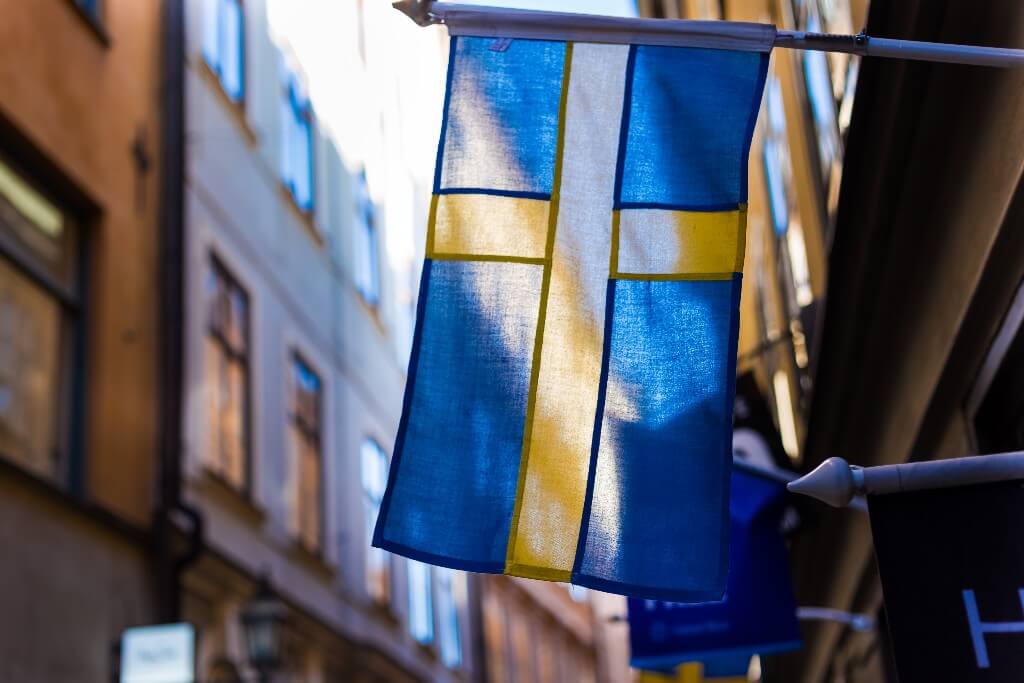I had never considered going to the Northern European countries until my university years. My dream country was always the US. However, like that famous John Lennon quote, “Life is what happens to you while you’re busy making other plans. After spending three years in the US, I lived in Sweden for a while and I ended up in Finland.
I’ve been to many European countries over the past years, and my experiences with none of them — nor the US — even compare to those I’ve had in Sweden and Finland.
Even though Sweden is perceived around the world as a partly social state with some services covered by the government, I figured out what the actual case was while I lived there. If social state had a color, let’s say blue, countries where you pay certain amounts of fees for education, health and other services would look light blue, while Sweden and Finland would look one of the darkest shades of blue.
Personal Number
Those planning a future in Sweden or Finland should first know how essential “personal number” is. It is like Social Security Number (SSN) in the US. It works the same way in both countries — Finland and Sweden. The first six digits are your date of birth — day, month and year. And the last four digits consist of a specific number designated to you.
Without this number, it is almost impossible to maintain your life. Because Sweden has taken in more immigrants compared to Finland, you could still benefit from some services to an extent. But it is more restricted in Finland.
This number helps determine your home address. You cannot open a bank account without it. If you are about to say that you would be ok without a bank account, let me inform you that some cafes and restaurants do not accept cash in these countries. All in all, you need to document the source of your income.
They also ask you for this number before buying a mobile phone and signing up for a gym. If your child is going to enroll in a pre-school and does not have a personal number, it is hard for you to find a pre-school. You may only be able to do it at a pricey school. You should note that if your child is primary school-age or older, you can find a school regardless of whether he/she has a personal number.
As most people say, you would want to be either a kid or an animal in the Northern Europe, because both have countless rights and privileges.
Education
The first thing that would surprise you in this field is that private schools also receive funds from municipalities and that schools run by municipalities offer better education.
A majority of youth in Sweden speak flawless English. In Finland, however, even though the percentage of those speaking English is high, they are not as fluent as Swedes.
For pre-school, you need to apply in advance in both countries. Then your child enrolls in one of the schools of your choice. The process may take up to three months maximum in Sweden. Your municipality is required to find a school for your kid within three months of your application.
Because the second official language in Finland is Swedish, some pre-schools teach in Swedish, while some others teach only in Finnish or half English-half Finnish. Swedish municipalities mostly do not have schools that teach in English. You need to pick a private school for that.
In terms of location, you are required to select a school close to the area you are residing in. So you are not allowed to send your kid to a school far from where you live, even if it has better education. You would have to move for that.
Tuition fees are calculated based on the parents’ income at schools run by municipalities, but this is usually a small amount. They could charge you less if you have multiple children.
There are some schools in Sweden that teach perfect English starting from primary school. However, you may have to wait for around five years in line for enrollment. This is why many parents sign up for those lists the second their child is born. You don’t have to wait for that long in Finland, as it is a smaller country with less immigrants.
Health
Healthcare services is a big issue in Sweden and Finland, as it is so in many countries. First of all, it is almost impossible to benefit from health services if you don’t have a personal number. Only in some exceptional cases, individuals are given a temporary personal number for healthcare.
You should also know that you cannot go to a hospital unless you are sick to the point of needing an ambulance. You are supposed to go to the nearest health clinic from where you live. After a doctor or a nurse examine you, they might refer you to a hospital depending on your condition.
What is interesting is that doctors (in both countries) do not research any disease on your body only based on suspicion, unless they are able to observe any symptoms. This means even if you feel some symptoms yourself, the first doctor that examines you must also see those symptoms. Only if you are convincing enough, you can get a chance to take certain tests.
On the other hand, if you need an emergency treatment, it is always possible. And there is no need to wait in line for that. The one who screams most or who is in the worst situation is allowed to get the front spot. But if your condition does not require urgent treatment or you are not loud enough, you might wait in emergency line for hours.
Both Sweden and Finland have a shortage of doctors. For this reason, they tend to admit doctors who graduated abroad and speak the language of the country.
Dental care is actually a whole different topic. Despite the fact that facilities run by municipalities are better in almost every service, most people prefer private clinics for their teeth. Another option is going to a public dental hospital. In Sweden, if you don’t need an urgent procedure, they may send you away and schedule another appointment for you.
In Finland, you would have to wait for around six months after your application to public facilities, except for emergency situations. You can quickly make an appointment for emergencies, though. But you need to go to private clinics for fillings and implants as they are not covered by insurance.
Citizenship
I have already mentioned that Sweden is more welcoming for immigrants than Finland. For instance, if you get a personal number in Sweden, you earn permanent residence permit after five years. And according to your conditions, you may become a citizen after seven years.
Even though Finland does not easily accept immigrants, it gives a personal number to everyone who came to stay for over a year. Regardless, residence permit is typically granted for a year to first-time applicants. You would need to apply for extension afterwards.
Permanent residence permit and citizenship in Finland is similar to those in Sweden in terms of waiting time, but there are differences. First off, you are required to take a language test for citizenship in Finland. While Sweden is still debating the administration of Swedish language exam to potential citizens, its neighbor to the east requires immigrants to pass a test for either one of its two official languages — Finnish or Swedish.
It is also important what type of visa — A or B — you received when you moved to the country. Because if your visa type is B, only half of the period you lived there counts. This means type B visa holders must stay in Finland for at least eight years in order to get a permanent residence permit.
Moreover, if you spend more than six weeks abroad, both countries cancel out the entire year in their calculation towards your visa. And of course, the period of time you previously spent consequently goes down to zero. You should also be careful about the expiration date of your visa so that you can apply for extension in time.
Maternity Leave
Paid maternity leave in Sweden is 480 days. But this whole period cannot be used by one parent. Either the mother of the father must use at least 60 days of it, while the other uses the rest, which is why the practice is called “parental leave.”
It can affect citizenship in some ways. For example, if you sign an agreement with a university for five years as a PhD student and you have two kids in within this term, you can automatically become a citizen with your parental leaves.
In Finland, you are entitled to take a paid leave of 105 business days for the birth of your child.
Moms and dads share parental leaves in both countries, which leads to the sight of dads with little babies everywhere.
To sum up, Northern Europe has a unique system. It offers people many privileges that are considered “unusual” in most other countries. Like everyone says, once you manage to enter the system, your life gets easier.
In addition to all these upsides, you should keep in mind that you cannot even see the Sun some days in winter and that day time ends in six hours. Also note that it rains every three days in summer.
**All rights reserved. Using quotes from this story requires crediting them to NOVO Gazette and adding a link to this page.









